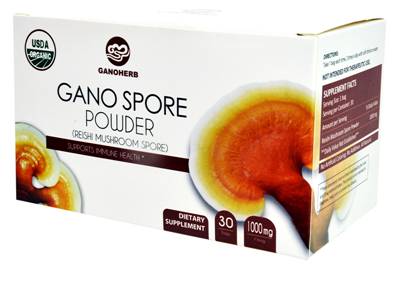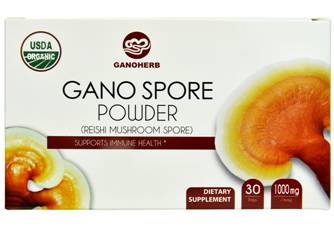In some areas of our province, a small number of plots have been sitting in the paddy crop during the rice growing season. This has caused food crops to have a prestige. It is necessary to find out the reason for sitting on a raft and distinguish the types of trappings and control them according to local conditions. According to Jiangan County's experience in controlling rice satiation for many years, it provides some reference suggestions. First, distinguish between type 1 and cold type: long-term low temperature and rainy weather, cold soaking fields, cold paddy fields, back field temperature caused by the lower soil. Symptoms manifested as delaying greening after planting, not taking new roots, aging roots, impeded vitality, or delaying the emergence of leaves after planting, slowing tillering, brown soft cotton roots, small and new roots, yellow leaves, and brown tips. Needle dry. 2. Poisoning type: It occurs in long-term flooded deep foot fields, poor soil permeability in the rushing fields, muddy fields, and big fertilizer fields behind houses. This type of plot produces a large amount of toxic substances such as hydrogen sulfide, organic acids, divalent iron, and methane, poisoning the roots of rice bran, and hindering the absorption of phosphorus and potassium in the root system. Symptoms are mainly yellowing after transplanting. The white roots are small and fine, and the roots are dark brown. They have dark roots or odd-shaped roots. They have bad smell. The tips of the old leaves are yellow and the rice plants are not clustered. 3, lack of type: Most of the lack of zinc, potassium, phosphorus. Dead yellow muddy field, white peony field lack of potassium; nitrate, cold leaching field phosphorus deficiency; carbonate purple soil, large fertilizer field and long-term heavy application of phosphate fertilizer zinc deficiency. Due to the lack of hormones, the physiological metabolism of the seedlings is hindered. Symptoms: P-deficit rice fields, young seedlings with less roots, weak roots, dark brown roots, axillary clusters, dark brown leaves; potassium-deficient rice fields, weak root growth, short leaves, dark green, old leaves above The auburn spots, the leaves are easily broken, and the main veins are yellow; the zinc-deficient fields, the seedlings are curled and the leaves are not easy to pull out, and the chlorotic stripes appear at the seedling stage, the roots are short and the leaves are red. 4, lean type. Occurs in heavily sloping shabby fields, high-yielding fields, and new mature fields with a low degree of ripening. Due to the serious lack of soil nitrogen, other nutrients are not much, resulting in the slow return of green seedlings after planting. The symptoms are yellowing of the leaves, poor root development, and lack of development of the stiff seedlings. Second, the method of prevention and treatment of sitting down because of sitting for many reasons, often a field of multiple reasons for concurrency. It is necessary to adapt to the conditions of the land, prevent it mainly, and comprehensively control it. 1, formula fertilization, increase nutrition: Daejeon combined ploughshare Mushi superphosphate or calcium magnesium phosphate fertilizer 40 kilograms, zinc sulfate 1 kilogram, organic fertilizer 500 kilograms, urea or ammonium phosphate 15 kilograms as the base fertilizer, but also with phosphate two mus Potassium hydrogen (Potassium and potassium content above 80%) 0.5 kg, zinc fertilizer (more than 20% zinc content) 0.5 kg watered with 75 kg foliar spray, or with potassium dihydrogen phosphate plus boost Fengbao or other foliar fertilizer Water spraying. This method has a preventive effect on the deficiency type and lean type. 2, drainage drying field, warming ventilation. For deep-rooted mud fields, cold-sweeping fields, and large fertilizer fields, it is best to use semi-dry planting hoe to increase soil oxidative property; if it is already sitting, it is necessary to drain the field and combine it with black and white ash (half lime and plant ash). , increase soil temperature and enhance soil permeability. Shallow irrigation and avoid deepwater irrigation. This method has better control effects on chilled and poisoned types.
Ganoderma Extract (Ganoderma Lucidum
extract/Reishi mushroom extract) is extracted from top-graded organic
shell-broken Ganoderma Lucidum spore powder using advanced modern technology. Spores
are the seeds of Ganoderma Lucidum. When it matures, the spores are released
from the mushroom cap. They are also where most of the nutrients of Ganoderma
Lucidum are contained. In order to allow the nutrients inside the spore powder
to be fully absorbed by human body, we used a patented technology called low
temperature physical shell-breaking technology to crack the cell wall of
Ganoderma Lucidum spore powder.

The Ganoderma we used for this product comes
from our self-built organic Ganoderma farm at Mt. Wuyi. Both the farm and the
GMP workshop have acquired organic certifications from 4 countries and regions
including Chinese, Japan, the US, and the EU. We do not use any type of
herbicide, pesticide, or chemical fertilizer during the whole cultivation
process, delivering the best and safest product to our customers.

By using
extraction technology, we can increase the concentration of Ganoderma
polysaccharides and triterpenes in the product. Reishi Mushroom Powder polysaccharides and
triterpenes both work together to enhance human’s immune system, fighting
against diseases and infections. Also, Ganoderma can help protect the liver,
increase sleep quality as well as relive stress.
Ganoderma Extract
Ganoderma Extract,Reishi Spore Powder,Ganoderma Lucidum Powder,Ganoderma Lucidum
Ganoherb International Inc. , http://www.ganoherb.us

